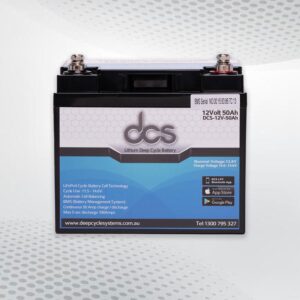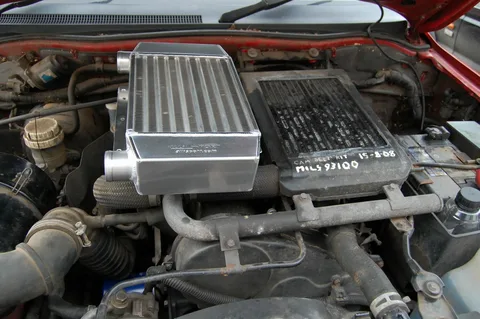If you are experiencing issues with your Hyundai Getz, one component that may be causing problems are the Hyundai Getz Crank Sensor. The crank sensor plays a crucial role in the engine’s operation, and when it malfunctions, it can lead to various issues. This blog post will discuss how to troubleshoot common crank sensor problems in your Hyundai Getz and provide tips on diagnosing, replacing, and maintaining the crank sensor to keep your vehicle running smoothly. Understanding the symptoms of a faulty crank sensor can be the first step in diagnosing the problem. Common signs include engine misfires, poor acceleration, and even the inability to start the car.
Understanding the Role of the Kia Rio Crank Sensor
While the section heading mentions the Kia Rio, the crank sensor’s role in a Hyundai Getz focuses primarily on detecting the crankshaft’s position and rotational speed. This sensor’s information is critical because it allows the Engine Control Unit (ECU) to adjust the fuel injection and ignition timing more accurately, ensuring the engine runs efficiently.
The Kia Rio Crank Sensor uses a magnet to monitor the crankshaft’s position, which is vital for starting the engine and its continuous smooth operation. Without a properly functioning crank sensor, the ECU could not make these adjustments, leading to poor performance, higher emissions, and potentially preventing the engine from running.
It’s important to note that while the Hyundai Getz and Kia Rio may share some mechanical similarities due to their manufacturers’ relationship, the specific details and location of the crank sensor might vary between models. Nonetheless, the crank sensor’s fundamental role remains consistent across these vehicles: to provide essential data that ensures the optimal timing and operation of the engine’s critical functions.
Understanding this role is the first step in diagnosing issues that may arise with the crank sensor, as its performance is directly linked to the vehicle’s overall drivability and efficiency.
Common Symptoms of a Faulty Hyundai Crank Sensor
Identifying the early warning signs of a faulty Hyundai crank sensor is key to preventing further engine issues and maintaining the vehicle’s performance. One of the most noticeable symptoms is intermittent stalling. This can happen without warning and is often more frequent when the engine is at operating temperature. Rough idling is another common indicator; the engine may shake more than usual or feel like it’s about to stall, but then it recovers. This symptom points towards the crank sensor’s failure to accurately detect the crankshaft’s position, leading to improper fuel injection timing.
Another symptom is difficulty starting the engine. You might find that your Hyundai Getz takes several attempts to start or doesn’t start. This issue arises because the engine control unit isn’t receiving correct information about the crankshaft’s position, making it hard to initiate the engine cycle properly. Additionally, a decrease in fuel efficiency can signal a faulty crank sensor. Since the sensor’s data is crucial for optimising the fuel injection and ignition timing, any malfunction can lead to the engine running less efficiently than normal, thereby consuming more fuel.
Lastly, the check engine light may illuminate your dashboard. While this light can indicate various issues, combined with any of the symptoms above, it strongly suggests a problem with the crank sensor. Each of these symptoms might seem minor, but they indicate a potentially significant issue with the Hyundai crank sensor that should not be ignored.
Diagnosing Crank Sensor Issues in Your Hyundai Getz
The crankshaft position sensor is crucial to your Hyundai Getz’s engine management system. It monitors the position and rotational speed of the crankshaft, providing essential data for the engine control unit (ECU) to optimise ignition timing and fuel injection. When the crank sensor fails, it can lead to various engine performance issues. Here’s how you can diagnose potential problems with the crank sensor.
Signs of a Failing Crank Sensor
A malfunctioning crank sensor can manifest in several ways. Common symptoms include hard starting, stalling, rough idling, or engine misfires. The Check Engine light may sometimes illuminate your dashboard, signalling a potential issue. If you experience any of these symptoms, it’s essential to investigate further.
Diagnostic Steps
Check for Error Codes:
Using an OBD-II scanner, retrieve any diagnostic trouble codes (DTCs) from the ECU. Codes such as P0335 (Crankshaft Position Sensor “A” Circuit) often indicate issues with the crank sensor.
Inspect Wiring and Connectors:
Examine the wiring harness and connectors leading to the crank sensor. Look for signs of damage, corrosion, or loose connections that could affect sensor performance.
Test the Sensor:
Using a multimeter, measure the sensor’s resistance and compare it with your vehicle’s service manual specifications. Additionally, you can perform a signal test while the engine runs to ensure the sensor produces the correct signal.
Check the Crankshaft and Sensor Alignment:
Ensure the sensor is properly aligned with the crankshaft and there is no excessive play or misalignment.
How do you replace the crank sensor in a Hyundai Getz?
Embarking on replacing the crank sensor in a Hyundai Getz might seem daunting at first, but with the right tools and patience, it’s a job that can be managed efficiently at home. First and foremost, ensure that your vehicle is safely parked on a level surface and that the engine is cool to avoid any potential injuries or accidents.
Begin the replacement process by disconnecting the negative battery terminal to prevent electrical shorts or shocks while working. With the battery disconnected, locate the crank sensor on your vehicle. In most Hyundai Getz models, the crank sensor is positioned near the crankshaft pulley at the bottom of the engine. It’s vital to consult your vehicle’s manual for the exact location, as variations can exist between years and engine types.
Once you’ve located the crank sensor, carefully disconnect the electrical connector. Depending on the model, this may require a small flathead screwdriver or a release tool to unlock the connector. With the connector detached, proceed to remove the mounting bolt holding the sensor in place using the socket wrench of the appropriate size. Gently extract the sensor from its position, being mindful not to damage any surrounding components.
Before installing the new crank sensor, compare it with the old one to ensure it matches the size and connector type. Clean the sensor’s mounting area on the engine to remove dirt or debris, ensuring a proper fit and connection for the new sensor.
Please insert the new crank sensor into position, secure it with the mounting bolt, and tighten it to the manufacturer’s specified torque. Reattach the electrical connector, ensuring it snaps securely into place. Finally, reconnect the negative battery terminal.
To complete the process, start your Hyundai Getz to ensure it runs smoothly and that no error codes indicate issues with the sensor installation. This procedure restores your vehicle’s proper function and helps maintain its efficiency and performance.
Preventive Maintenance Tips for Prolonging Kia Rio Crankshaft Sensor Life
One of the best ways to extend the life of your crankshaft sensor is through regular inspections. Check the sensor for any signs of damage, such as cracks or corrosion, and ensure it is properly secured. This will help you catch potential issues before they lead to more significant problems.
Keep the Sensor Clean
Dirt and debris can accumulate around the crankshaft sensor, affecting its performance. Regularly clean the area around the sensor with a soft cloth and avoid using harsh chemicals. Keeping the sensor clean ensures it operates efficiently and reduces the likelihood of premature wear.
Check for Electrical Issues
The Kia Rio Crankshaft Sensor relies on a proper electrical connection to function correctly. Inspect the wiring and connectors for any signs of wear or damage. Ensure all connections are secure and free from corrosion. Addressing any electrical issues promptly will prevent sensor malfunctions and extend its lifespan.
Maintain Proper Engine Temperature
Extreme engine temperatures can affect the crankshaft sensor. To ensure your engine is running at the correct temperature, regularly check the coolant levels and ensure the cooling system is functioning properly. Avoiding overheating will help prevent undue stress on the sensor.
Follow the Manufacturer’s Maintenance Schedule
Adhering to Kia’s recommended maintenance schedule for your Rio is crucial. This includes regular oil changes and engine checks that can indirectly affect the crankshaft sensor’s performance. Following these guidelines ensures that your vehicle remains in optimal condition and helps prolong the sensor’s life.
Selecting the Right Replacement Crank Sensor for Your Hyundai Getz
The crankshaft position sensor, or crank sensor, is crucial in your Hyundai Getz’s engine management system. It monitors the crankshaft’s position and speed, providing essential data to the engine control unit (ECU) for optimal fuel injection and ignition timing. A faulty sensor can lead to poor engine performance, reduced fuel efficiency, or stalling.
Compatibility and Specifications
Compatibility is key when choosing a replacement crank sensor. Ensure the sensor is specifically designed for your own Hyundai Getz model year. Check the vehicle’s manual or consult a professional to confirm the specifications. Most sensors are either magnetic or hall-effect types, and it’s important to match these to avoid compatibility issues.
Quality and Brand Considerations
Opt for high-quality sensors from reputable brands. Genuine Hyundai parts or well-known aftermarket brands offer reliability and durability. Avoid cheap, unbranded options as they may compromise performance and longevity. Reviews and recommendations can provide valuable insights into the reliability of different brands.
Installation Tips
If you’re comfortable with DIY repairs, replacing the crank sensor can be straightforward. Ensure the engine is cool and disconnect the battery before starting. Follow the manufacturer’s instructions closely, and do not damage surrounding components. If you’re unsure, having a professional mechanic handle the replacement is best to ensure proper installation and function.
Conclusion
Navigating the complexities of Hyundai Getz crank sensor issues can be daunting for any car owner. However, these challenges can be efficiently overcome with a solid grasp of the sensor’s critical role, awareness of the signs of failure, and a systematic approach to troubleshooting. Embracing preventive maintenance practices extends the crank sensor’s lifespan and ensures your vehicle’s ongoing reliability and performance. Opting for quality replacement parts, whether OEM or reputable aftermarket options, is pivotal in resolving sensor-related issues.
FAQS
Q: What are the indicators that my Hyundai Getz crank sensor might be failing?
A: Indicators include unexpected engine stalling, an engine that idles roughly, difficulty in starting the engine, decreased fuel efficiency, and the illumination of the check engine light on your dashboard. These symptoms, especially when occurring together, suggest that the Hyundai Getz crank sensor may malfunction.
Q: Can I replace the crank sensor in my Hyundai Getz on my own?
A: It is possible for individuals with a moderate level of mechanical skill and the proper tools to replace the crank sensor in a Hyundai Getz. The process involves locating the sensor, safely removing it, and installing the new one. However, if you’re unsure about your ability to perform this task, consulting a professional mechanic is advisable to avoid potential issues.
Q: How can I ensure I purchase the correct crank sensor for my Hyundai Getz?
A: When selecting a new crank Sensor, it’s important to choose one that is compatible with your specific model, year, and engine type of Hyundai Getz. Opt for sensors from reputable manufacturers and consider OEM parts for guaranteed compatibility. Additionally, reviewing product descriptions, checking part numbers, and consulting automotive forums for recommendations can be helpful.




